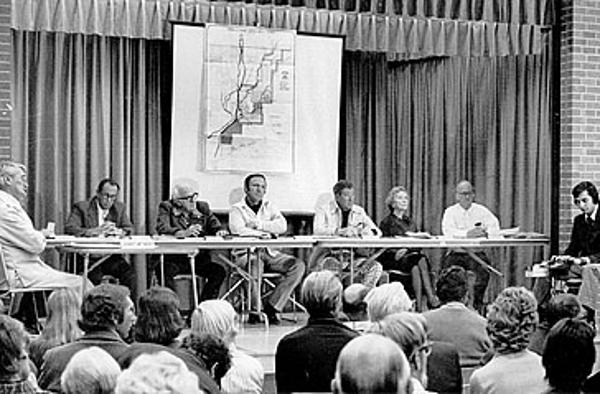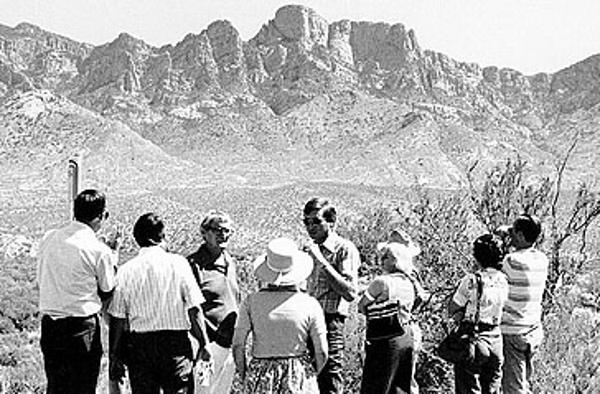Nestled in the northwestern foothills of the magnificent Santa Catalina Mountains, Catalina State Park stands as a pristine natural sanctuary. Just a short drive from the bustling city of Tucson, Arizona, this 5,500-acre high desert park is a haven for a myriad of desert plants, wildlife, and archaeological sites. Offering engaging outdoor activities such as camping, picnicking, bird watching with over 150 species calling it home, and miles of trails for hiking, birding, and equestrian pursuits, Catalina State Park is a treasure trove for nature enthusiasts and history buffs alike.
The initial impetus to preserve what is now Catalina State Park came in the early 1970s when the community rallied against a proposed housing development on Rancho Romero, favoring the preservation of the area. Representative Charles King’s request for a feasibility study on the property marked the beginning of a lengthy process to establish the park. This concerted effort by concerned citizens and the subsequent formation of the Oracle Road Green Belt Committee underscored the community’s dedication to conserving their natural surroundings.
Legislative actions and planning for Catalina State Park involved overcoming initial reluctance from the Parks Board, but with determined advocacy led by Representative Charles King and the support of the University of Arizona, a master plan for the park was eventually developed. This master plan, crafted with significant input from the community and various stakeholders, outlined the vision for a park that would not only protect its natural and cultural resources but also provide recreational opportunities for future generations. The collaborative efforts underscored the park’s potential to become a cherished public space for education, recreation, and conservation.

- Early efforts and community involvement in the preservation of Catalina State Park’s natural beauty. Source: azstateparks.com
The journey to the park’s creation involved complex land exchanges, legal challenges, and significant investments in purchasing and developing the necessary land. The establishment of Catalina State Park was marked by tireless efforts to navigate these challenges, including the resolution of legal disputes that threatened to derail the project. Through dedicated advocacy, negotiation, and securing federal grants, the vision for the park steadily transformed from an ambitious concept into a tangible reality, reflecting a broad community commitment to preserving natural beauty and history for future enjoyment.

- The Parks Board deliberating on the future of Catalina State Park, marking a turning point in its history. Source: azstateparks.com
The official opening of Catalina State Park on May 25, 1983, was a cause for celebration. Governor Bruce Babbitt, alongside community members who had played pivotal roles in the park’s establishment, marked the occasion with a dedication ceremony. This event highlighted the culmination of over a decade of efforts to conserve the area’s rich natural and cultural heritage. Managed under a Special Use Permit from the USDA Forest Service, Catalina State Park has since become an iconic destination, offering a gateway to the diverse landscapes and histories of the Sonoran Desert.

- Planning group visit in 1978, laying the groundwork for Catalina State Park’s future. Source: azstateparks.com
Prior to its establishment as a state park, the land tells a story of centuries of human history, from the ancient Hohokam people who left behind the intriguing Romero Ruin, to Spanish and American settlers who shaped the region’s ranching and mining legacy. These layers of history, set against the backdrop of stunning desert scenery, make Catalina State Park a place where past and present converge, inviting exploration and discovery. As visitors walk the trails, camp under the stars, or observe the diverse wildlife, they are participating in the ongoing story of this remarkable area, a testament to the vision and perseverance of those who fought to protect it.
Whether you’re a local resident or a traveler seeking the beauty and tranquility of the Arizona desert, Catalina Wai’anae Park beckons with its rich history, stunning landscapes, and abundant recreational opportunities. It stands as a symbol of community action and environmental stewardship, reminding us of the value of preserving natural and cultural heritage for future generations. As we explore its trails and delve into its past, we become part of its story, contributing to the legacy of Catalina State Park.



